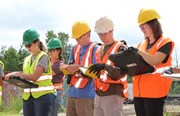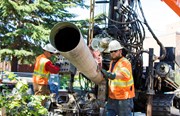Workforce Planning: How Companies Can Ease the Impact of Baby Boomer Retirements
By: Jessica AlexanderThe youngest Baby Boomers are turning 57 this year, and more and more people from this generation are retiring every year.
According to a study conducted by the Pew Research Center, 3.2 million more Boomers retired in 2020 than the year before, and those numbers will only continue to increase. We see this reflected in the drilling industry, too.
That is a tremendous amount of knowledge and expertise leaving our workforce. In many cases, that knowledge isn’t being adequately transferred to younger employees.
We can’t stop time or Boomer retirements, but we can take very specific steps–right now–to ensure our organizations are prepared for this transition.
Understand the Problem
It’s important to understand what is called the Grey Ceiling phenomenon, as well as the implications for today’s workforce. Baby Boomers have continued their employment for longer that previous generations—some because they are healthier longer and enjoy the work, and others to make up for lost earning time during the recession of 2008. This trend, however, prevented younger generation employees from advancing into higher level positions held by Boomers that would have previously been vacated sooner. This put them (and our industry) at a disadvantage, because they weren’t given the opportunity to develop the knowledge and expertise required for those higher level roles.
The lack of knowledge transfer to younger generation employees is the primary reason most organizations face a talent gap when Baby Boomer retire. And since the onset of the COVID-19 pandemic, many Boomer employees are deciding that continuing to work isn’t worth the risk physically or mentally. This is a driving factor behind the surge of retirements last year.
Conduct a Workforce Analysis
Before we can respond to this challenge, we must first conduct what’s known as a workforce analysis.
In simple terms, a workforce analysis is an examination of employee-related data that helps organizational leaders make decisions related to staffing. When considering the challenge of Boomer retirements and knowledge transfer, there are several data points a company should evaluate:
- The age of your existing workforce – When you know the ages of your employees, you can project approximately how many retirements may occur in the next 2, 5, and 10 years and plan accordingly.
- Primary retirement impacts – You must determine how each retirement in your organization will impact overall operations. This will often depend on the role of the employee.
- High risk roles or business units – Pay special attention to roles that are mission critical to the functioning of your organization. Identify any departments or business units that are at high risk of multiple retirements in a short period of time.
Strategic Workforce Planning
Using the data from your workforce analysis, you can begin to create your strategy. Start by thinking about where your organization will be in the next 3, 5, and 10 years. You will want to be able to answer most (if not all) of these questions:
- How might projected retirements impact the organization’s future goals and priorities?
- How will your company prepare younger generation drillers and specialists for the roles that will soon be open?
- Do you have a formalized leadership training program to prepare younger generation employees for their next career move within the company? If not, what can you do now to put this on your company’s roadmap?
- Is a phased retirement program a potential option to ease Boomers into retirement while facilitating knowledge transfer? If so, what would that look like?
- Have you defined what specifically your organization needs from retirement age employees? If it’s knowledge transfer or job sharing, have these programs been established and are employees being guided through them?
The answers to the questions above will help you design a go-forward strategy for ensuring your organization retains the knowledge, skills and talent that Baby Boomers have stewarded during their careers.
Have questions about workforce analysis or planning? Reach out to me with your questions at [email protected].
ABOUT THE AUTHOR

Jessica Alexander, SHRM-SCP
DIRECTOR OF TALENT ACQUISITION
[email protected]
Jessica Alexander is the Director of Talent Acquisition for Cascade Environmental, LLC. She holds a B.S. in Human Resource Management, B.S. in Business Administration, MBA, and Doctorate of Philosophy (ABD) in Human Resource Management. After completing ten years of military service in the United States Air Force in the Logistics and Transportation Management field, Jessica launched a distinguished career specializing in recruiting and talent development. She is passionate about the development of people and their ability to drive companies forward.





